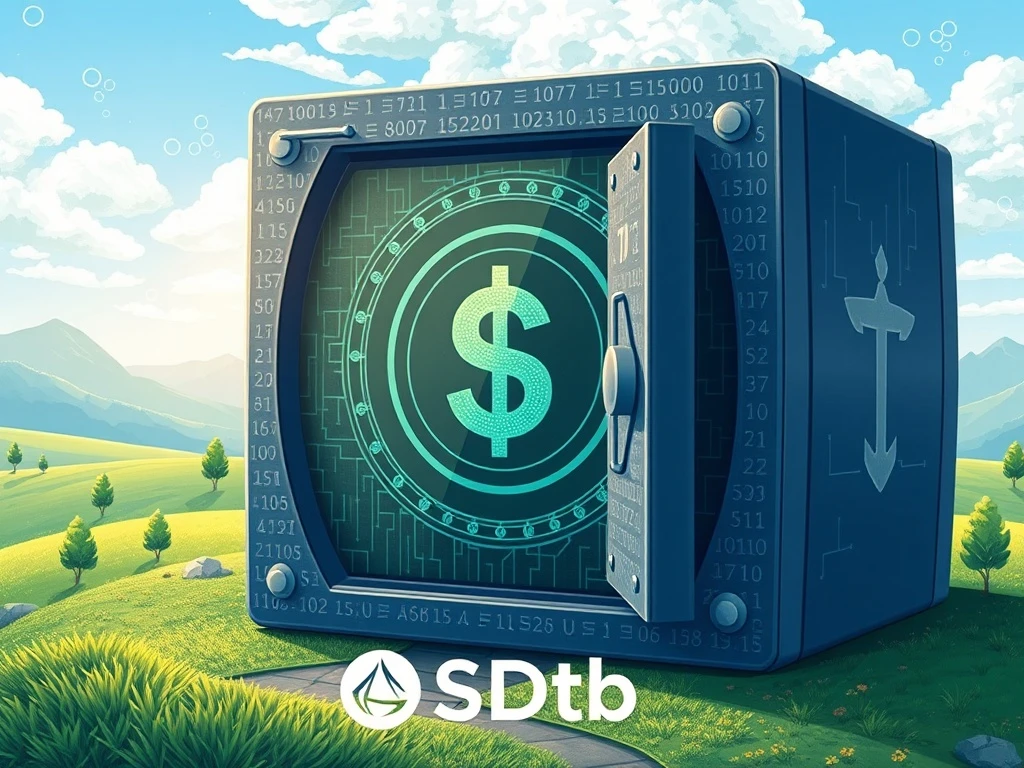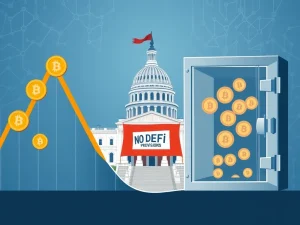Pioneering Milestone: Ethena USDtb and Anchorage Digital Unveil First GENIUS-Compliant Onshore Stablecoin

In a groundbreaking development poised to reshape the digital asset landscape, Ethena, a leading synthetic dollar and stablecoin platform, has partnered with Anchorage Digital, the sole federally chartered crypto bank in the U.S. This collaboration marks the official transition of Ethena’s USDtb stablecoin into a fully regulated onshore product, setting a new precedent for crypto compliance within the traditional financial system. This isn’t just news; it’s a pivotal moment signaling a maturing market where innovation and robust oversight can truly coexist.
The Genesis of GENIUS-Compliant Stablecoins: Ethena USDtb Takes Center Stage
The digital asset world has long grappled with regulatory ambiguity, especially concerning stablecoins. However, the recent announcement from Ethena and Anchorage Digital is a beacon of clarity. Their strategic alliance positions Ethena USDtb as the very first stablecoin to fully align with the U.S. Treasury’s newly enacted GENIUS Act. Previously operating offshore, USDtb will now be minted and managed entirely within the United States, a move that directly addresses legislative efforts to standardize stablecoin operations and mitigate systemic risks.
- Onshore Transition: USDtb moves from offshore issuance to full U.S. regulation.
- Regulatory Alignment: First stablecoin to comply with the GENIUS Act.
- Risk Mitigation: Aims to reduce systemic risks through standardized operations.
This transition isn’t merely a technicality; it’s a testament to a broader industry shift towards greater regulatory compliance. By anchoring USDtb to U.S. regulatory requirements, Ethena and Anchorage are setting a powerful precedent for future compliance-driven innovation in the crypto space.
Anchorage Digital’s Pivotal Role in Crypto Compliance
The choice of Anchorage Digital as a partner is no coincidence. As the only federally chartered crypto bank in the U.S., Anchorage brings unparalleled regulatory infrastructure to the table. With over $3 billion in assets under custody, Anchorage will serve as the issuer of USDtb, while Ethena will continue to provide the underlying assets. This structure is meticulously designed to address key regulatory concerns, particularly regarding transparency in reserve backing and operational compliance.
Anchorage’s involvement ensures that USDtb operates under the vigilant oversight of U.S. regulators, including the Federal Reserve. This collaboration is a powerful demonstration of how established financial institutions can seamlessly integrate with innovative crypto platforms, bridging the gap between two previously disparate worlds. Their expertise in navigating complex financial regulations is invaluable in establishing a trusted framework for digital assets.
Understanding the GENIUS Act: A Game Changer for Stablecoin Regulation
At the heart of this transformative development is the GENIUS Act, signed into law by President Donald Trump in July 2025. This landmark legislation has finally created a clear legal framework that defines responsibilities for stablecoin issuers and custodians. Its passage has been widely anticipated, as it aims to remove the regulatory ambiguity that previously hindered U.S. institutions from fully engaging with stablecoin ecosystems.
The Act’s impact is already palpable. Analysts note a significant increase in engagement from traditional financial players, with institutions like PNC Bank and Western Union actively exploring stablecoin integrations. These integrations promise to enhance cross-border transactions, offering advantages such as real-time settlement and 24/7 availability, far surpassing the capabilities of legacy systems like SWIFT.
Beyond Borders: The Impact of Onshore Stablecoin Adoption
The launch of an onshore stablecoin like USDtb has far-reaching implications, not just for the U.S. but for the global financial landscape. This move aligns perfectly with international efforts to harmonize stablecoin regulations, drawing parallels with frameworks like the European Union’s MiCA (Markets in Crypto-Assets) and the Bank for International Settlements’ (BIS) advocacy for cross-border digital currency corridors. Teresa Cameron, CFO of Clear Junction, highlighted that the GENIUS Act empowers financial institutions to adopt stablecoins as efficient alternatives to traditional systems.
This compliant-first approach is likely to influence future stablecoin projects, incentivizing other institutions to prioritize regulatory adherence. The success of USDtb will be closely watched by regulators and market participants alike, serving as a crucial benchmark for how digital currencies can be safely and effectively integrated into mainstream finance.
Navigating the Future: Challenges and Opportunities
While the launch of the first GENIUS-compliant stablecoin is a significant stride, the journey isn’t without its challenges. Ongoing dialogue with regulators remains crucial to adapt to evolving market dynamics and technological advancements. Furthermore, seamless integration into existing financial infrastructure will require continuous effort and collaboration across various stakeholders.
Despite these hurdles, the USDtb launch signals a maturing market where innovation and regulation can indeed coexist. It paves the way for greater institutional adoption, increased liquidity, and enhanced trust in the digital asset space. The pioneering efforts of Ethena and Anchorage Digital are not just about a single stablecoin; they are about laying the foundation for a more secure, efficient, and regulated future for digital finance.
Conclusion: A New Era for Digital Assets
The partnership between Ethena and Anchorage Digital, culminating in the launch of the first GENIUS-compliant Ethena USDtb, represents a monumental leap forward for the entire cryptocurrency industry. It demonstrates that regulatory compliance is not a barrier to innovation but a catalyst for mainstream adoption and institutional confidence. As USDtb embarks on its journey as a fully regulated onshore stablecoin, it sets a powerful precedent, promising to unlock new opportunities and redefine the future of finance in the digital age. This is truly a moment to watch, as the implications will reverberate across global markets for years to come.
Frequently Asked Questions (FAQs)
What is the significance of USDtb becoming the first GENIUS-compliant stablecoin?
The significance lies in its pioneering status. By becoming the first stablecoin to align with the U.S. Treasury’s GENIUS Act, USDtb sets a new standard for regulatory compliance in the digital asset space. This move provides clarity and trust, potentially encouraging broader institutional adoption and integration of stablecoins into traditional financial systems.
How does the GENIUS Act impact stablecoin regulation in the U.S.?
The GENIUS Act, signed into law in July 2025, establishes a clear legal framework for stablecoin issuers and custodians. It aims to remove regulatory ambiguities that previously deterred U.S. institutions, thereby encouraging greater participation in the crypto market and mitigating systemic risks associated with unregulated digital assets.
What role does Anchorage Digital play in this partnership?
Anchorage Digital, as the only federally chartered crypto bank in the U.S., acts as the issuer of USDtb. Their federally regulated infrastructure ensures that USDtb operates under the oversight of U.S. regulators, including the Federal Reserve, providing a crucial layer of trust and compliance for the stablecoin’s operations.
What are the benefits of an onshore stablecoin like USDtb?
An onshore stablecoin like USDtb offers several benefits, including enhanced regulatory oversight, increased transparency in reserve backing, and greater trust for institutional participants. It removes regulatory hurdles that previously prevented U.S. institutions from engaging with stablecoins, facilitating more secure and compliant cross-border transactions and real-time settlements.
How might this partnership influence the future of crypto compliance?
This partnership sets a powerful precedent for future crypto projects. It demonstrates that adhering to robust regulatory frameworks is not only possible but also beneficial for gaining mainstream acceptance. It will likely incentivize other stablecoin projects and digital asset firms to adopt a similar compliance-first approach, fostering a more secure and regulated crypto ecosystem globally.






